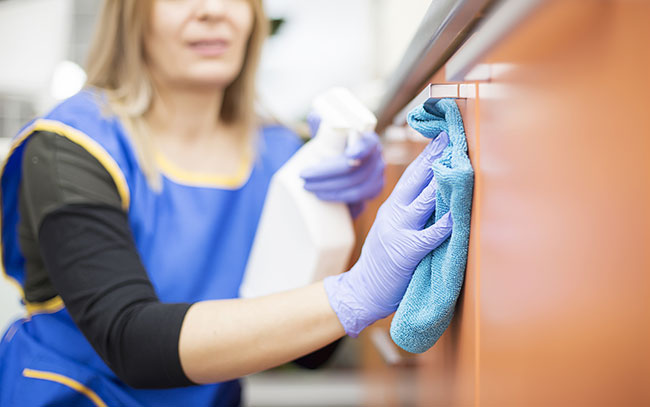Factoring Infection Control Into Office Design Considerations
Posted by HJT Design

Dental offices must withstand the rigors of daily cleaning and sterilization. Waiting room, equipment sterilization space, and exam room designs that promote infection control create a safe space for employees and patients. Factor infection control into overall design activities for dentist office renovations, new construction, and expansions.
The Role of Surfaces in Infection Control
Some pathogens use human contact pathways to spread, while others sit on surfaces and infect any host who comes in contact. Dental professionals wear masks and gloves and provide hand sanitizer in the waiting room to minimize the spread of human-to-human pathogens. Facilities must go a step further, however, to address surface contaminants. Every surface and piece of furniture plays a role in infection control.
Every area in a dental space must support infection control standards – this includes the waiting room, x-ray rooms, exam rooms, public bathrooms, sterilization areas, and administrative spaces. Surfaces, flooring, and furniture materials must allow for routine cleaning.
Facilities that fail to maintain a sterile environment could face high rates of patient and employee infection as well as legal claims arising from serious illnesses. Proper infection control management increases space safety and contributes to successful patient outcomes.
Five Design Considerations for Infection Control
Dentistry spaces must meet office requirements for form and function. Modern approaches to health care office design and furnishings celebrate the need for infection control, functionality, and appearance. Use the following considerations to create an efficient and user-friendly dentistry facility:
Surface Cleaning
Search for nonporous and/or protected materials designed for routine disinfection. Waiting room furniture, reception desks, bathroom surfaces, exam room furniture, and tabletops should accommodate routine wipe-downs with health care-grade disinfectants. Some materials feature antimicrobial properties to minimize the risks associated with surfaces in a health care setting further.
Carpeted and hard flooring inside the facility should resist damage from harsh chemicals, punctures, and staining. Look for floor materials designed to inhibit fungi and bacterial growth without the need for special coatings or treatments over time.
Sterilization Areas
Dental professionals spend a significant amount of time in office sterilization areas. Invest in instrument cassettes and disinfection washers to minimize the amount of hand scrubbing and the potential for surface contamination. Design the space to accommodate daily workflow.
Do not skimp on antimicrobial surfaces and a roomy, well-ventilated sterilization space. Appropriate investments in the area will support infection control standards, decrease the amount of time spent on sterilization, and increase employee satisfaction.
Storage and Infection Control
Easy access to storage materials decreases the need for professionals to rummage through disordered cabinets and risk contamination. Consider using tinted glass in storage areas and in exam rooms to allow visibility and easy access while containing instruments and other materials in a tidy manner. Place storage in easily accessible areas to prevent the need for excessive movement among exam rooms, sterilization areas, and storage spaces.
Ventilation
Air quality decreases the risk of airborne infections, reduces the amount of dust and chemical vapor circulating in an office, and contributes to a satisfactory patient experience. The smell of a dental office is distinct. Disinfection chemicals and dental treatments can create an unpleasant atmosphere. Proper ventilation minimizes chemical smells while preventing pathogens from sitting on surfaces and moving through the air. Ventilation design may include advanced air filtration, exhausts, and duct placement considerations.
Doorway Setups
Door handles are dirty. Creative doorway and handle designs minimize the need for patients and professionals to touch handles in restrooms, exam rooms, and other areas of the facility. Areas that do call for a traditional handle setup often feature built-in sanitizing stations for personal hygiene.
The commercial materials industry supports infection-control design and offers attractive options for worry-free flooring, furniture coverings, cabinetry, and tabletops. Compare infection-resistant materials and designs from the waiting room to sterilization areas to protect employees and patients from common pathogens. If you’re not too sure where or how to start with the process, contact HJT to schedule a free consultation for answers and knowledge to prepare and empower you in moving forward with confidence.